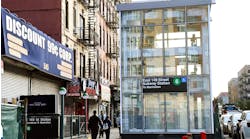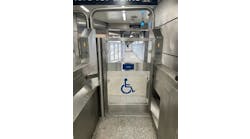MTA plans accessibility improvements at 20 additional subway stations under proposed 2020-2024 Capital Plan
An additional 20 subway stations will be fully ADA accessible under the proposed $51.5 billion 2020-2024 Capital Plan, according to an announcement from the Metropolitan Transportation Authority (MTA).
“The announcement of these additional 20 ADA stations is a major step forward for MTA systemwide accessibility,” said MTA Chairman and CEO Patrick J. Foye. “New Yorkers deserve a subway system that works for everyone. This historic investment of $5.2 billion for accessibility in the next Capital Program will be life-changing for our customers.”
The new stations build on 48 additional accessible stations previously announced and are part of a total of 70 subway stations that will receive a $5.2 billion investment in accessibility.
“We’ve developed an innovative plan to bundle stations so construction can move much faster than in the past,” said MTA Chief Development Officer Janno Lieber. “We have the procurement packages ready to go. Today’s MTA leadership is determined to give New Yorker’s a lot more accessible stations and do it better, faster and cheaper.”
In September, the MTA released the proposed 2020-2024 Capital Plan, a historic plan that invests $51.5 billion across the region’s subways, buses, commuter rail systems and bridges and tunnels over the next five years. The plan is the largest in MTA history and includes $40 billion devoted to NYC Transit’s subway system and bus network, with top priority given to accelerating accessibility. NYC Transit’s Fast Forward plan to modernize the subway system established the goal of making at least 50 more subway stations accessible in five years so that customers would not have to travel farther than two stops to reach an accessible station. The proposed 2020-2024 Capital Plan not only meets that goal but goes beyond it with a total of 70 stations.
“We are very serious about the subways being accessible to as many people as possible, which is why accessibility is a top priority for me since day one,” said MTA New York City (NYC) Transit President Andy Byford. “Investing in accessibility at 70 subway stations will open up significant portions of the subway map for people who rely on elevators or ramps for access to the system.”
MTA says the first 48 stations identified in September met the “two-station away” coverage goal and went even further by including several important transfer points and complexes, and other community priority stations. The 20 additional stations identified today further increase citywide geographic coverage and were chosen based on factors including demographics, transfers and intermodal connections, constructability, ridership and synergy with other work planned for the 2020-2024 Capital Plan in order to maximize resources and minimize impact on customers and communities.
The 20 additional stations announced today serve various subway lines and diverse communities, with a focus on increasing accessibility in some of the city’s fastest-growing neighborhoods and major corridors. The entire station selection process was driven by extensive community input, including public engagement events, outreach to advocates and community groups, as well as feedback from thousands of elected officials, advocates and customers with disabilities.
“With this list of stations, we are going beyond our commitment to put customers no more than two stations away from an accessible station within five years, filling coverage gaps and increasing access to key transfer points, terminals and high-ridership stations,” said Alex Elegudin, NYC Transit’s senior advisor for systemwide accessibility. “We will continue to work closely with advocates and communities to prioritize future accessibility investments and work internally to accelerate these projects while endeavoring to limit any disruption to service.”
The remaining two stations of the 70 proposed in the 2020-2024 Capital Plan will be announced at a later date. A list of the 68 stations can be found on the MTA’s website.


